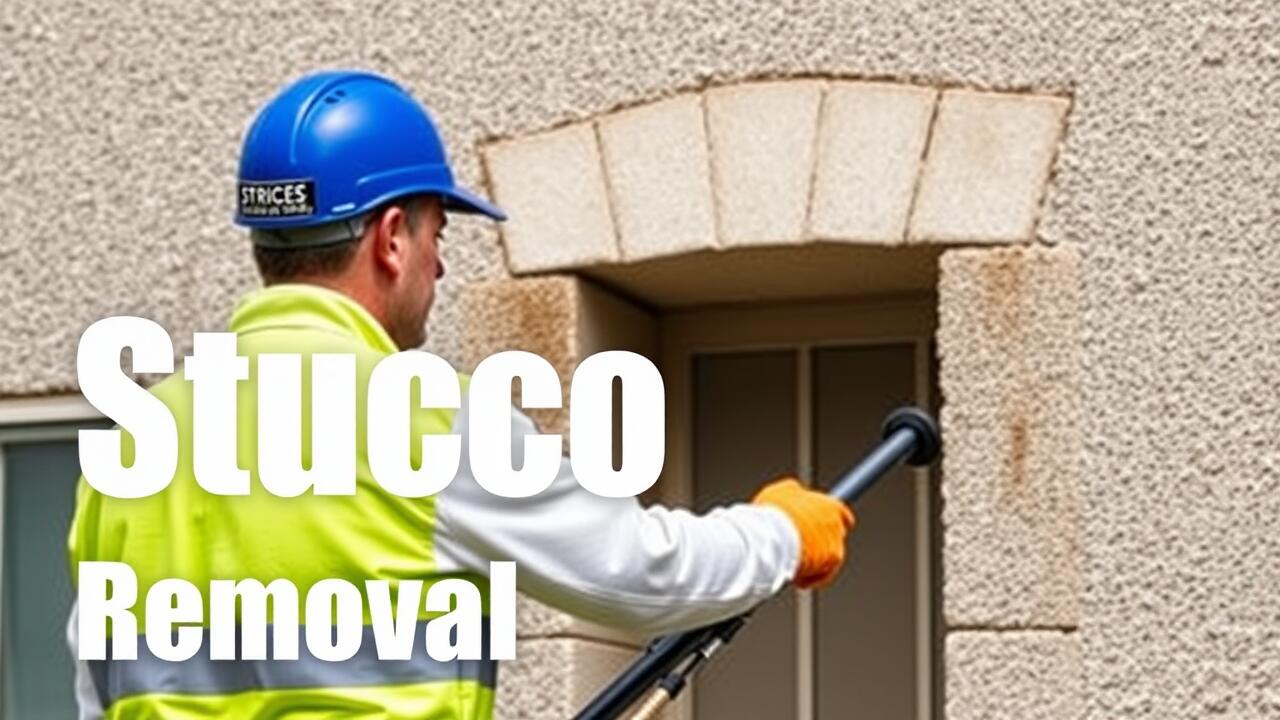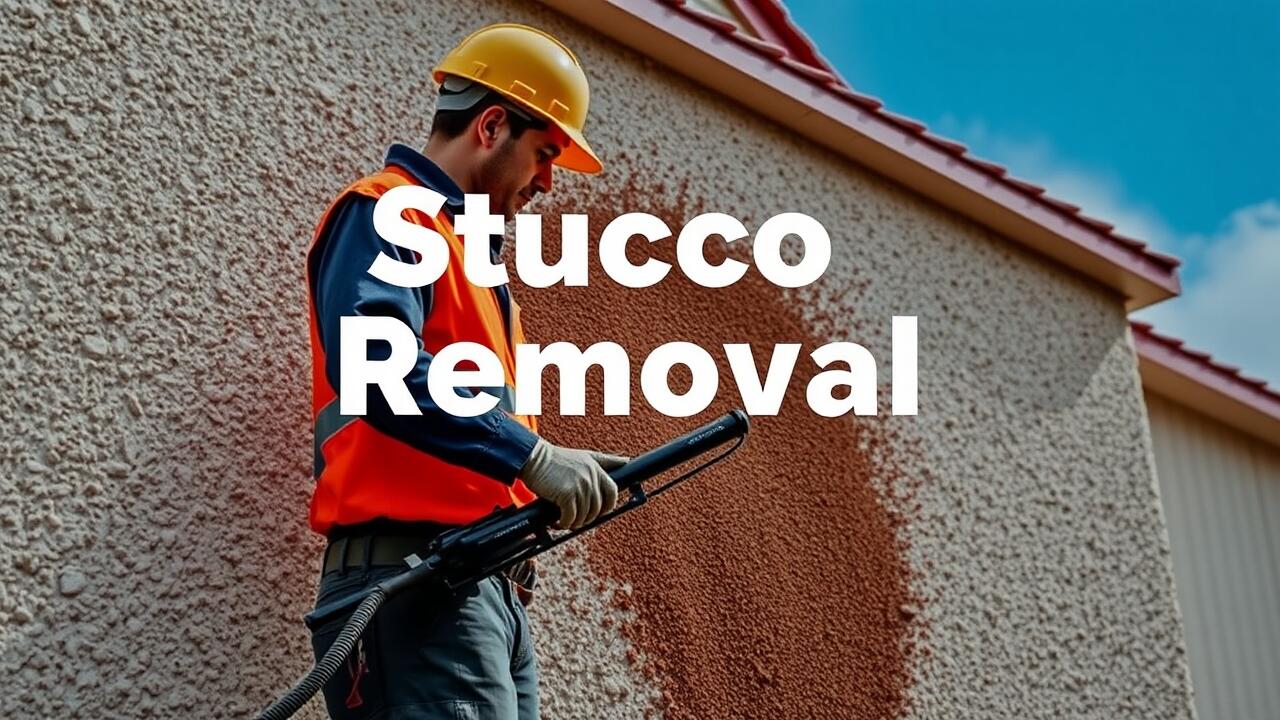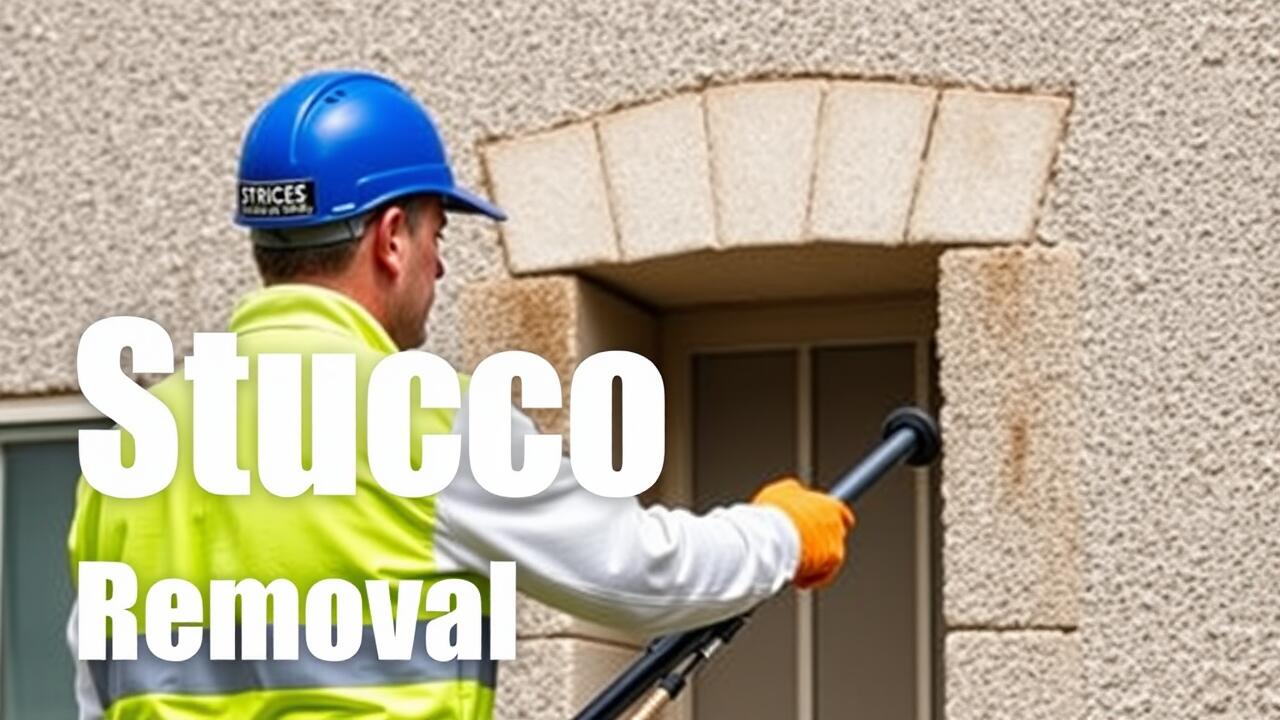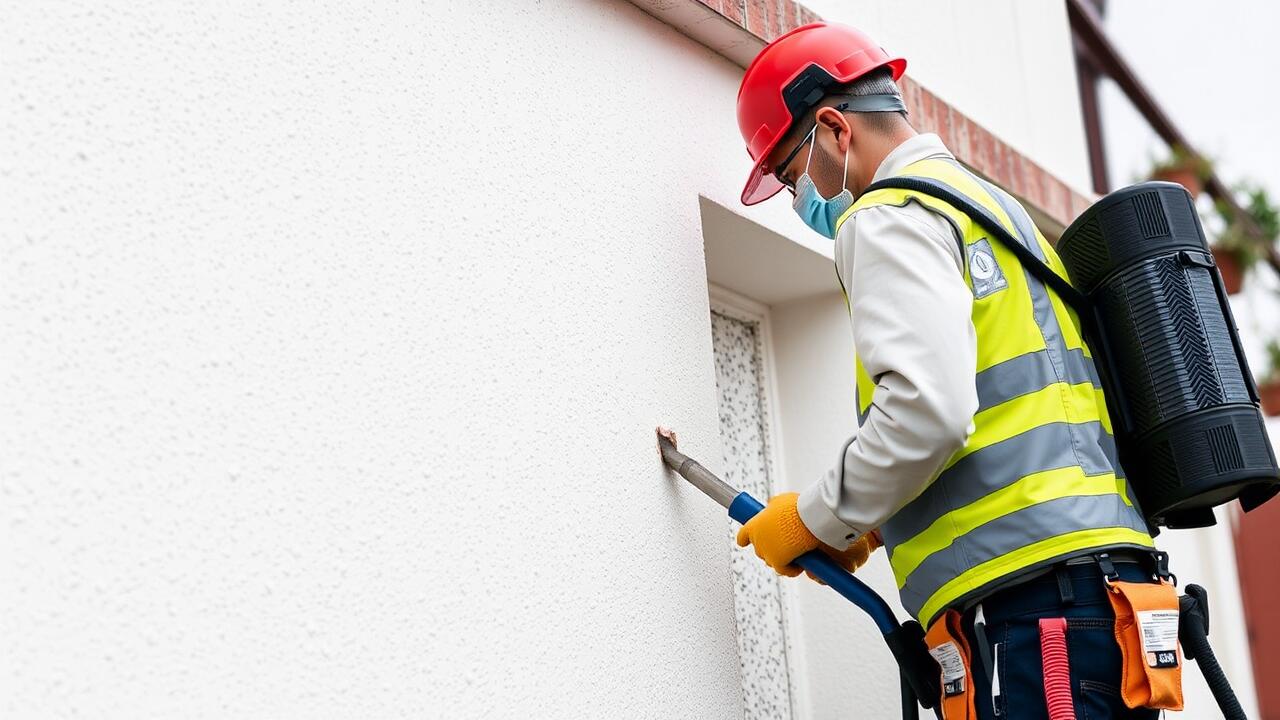
Techniques for Effective Stucco Removal
Effective stucco removal requires a methodical approach, and using a pressure washer can significantly simplify the process. Begin by assessing the condition of the stucco. Identify any areas that may require extra attention, such as cracks or loose patches. Ensure the pressure washer you choose delivers adequate power. A standard recommendation is to use a pressure setting between 1,500 to 3,000 psi. This range provides enough force to remove the stucco without damaging underlying surfaces. For those seeking assistance, searching for "Stucco Removal near me" can help locate professionals equipped with the appropriate tools and expertise.
In addition to pressure washing, utilizing the right nozzles and cleaning solutions is crucial for successful stucco removal. A wide fan nozzle can cover larger areas efficiently, while a narrower nozzle helps to target stubborn spots. Combining warm water with a biodegradable cleaning agent can break down old stucco. Be mindful of the environment during this process. After the stucco has been softened, it is essential to follow up with careful scraping or scraping tools to ensure thorough removal. If any challenges arise, consulting with local specialists found through “Stucco removal near me” can provide guidance and support.
Best Practices for Pressure Washing Stucco
When undertaking pressure washing for stucco removal, selecting the appropriate pressure setting is crucial. Too much pressure can damage the stucco surface, leading to costly repairs or further complications. Begin with a lower pressure, typically around 1,200 to 1,500 PSI, and gradually increase as necessary. Use a wide spray nozzle to distribute water evenly and avoid focusing on one spot for too long. This method helps to lift the stucco without causing significant harm to the underlying structure.
Before initiating the washing process, it is essential to prepare the area effectively. Remove any loose debris from the surface and cover surrounding plants and windows to protect them from damage or water intrusion. If you are unsure where to start, consider searching for "Stucco Removal near me" to find local professionals who specialize in this task. Their expertise can ensure that the project is completed efficiently and safely, minimizing potential issues.
Environmental Considerations in Stucco Removal
Environmental considerations play a crucial role in the process of stucco removal. Proper management of debris and water runoff is essential to minimize environmental impact. If you are searching for “Stucco Removal near me,” it's important to choose a company that prioritizes eco-friendly practices, ensuring that any hazardous materials are disposed of responsibly. This approach not only protects local wildlife but also adheres to regulations concerning construction waste.
Sustainable practices in stucco removal extend beyond waste management. Using pressure washers efficiently significantly reduces water consumption compared to traditional methods. Advanced equipment can effectively remove stucco while utilizing less water, making it an ideal choice for environmentally conscious homeowners. When considering options for “Stucco Removal near me,” inquire about techniques that emphasize sustainability, ensuring that your project aligns with the growing commitment to reduce ecological footprints in home improvement.
Sustainable Practices and Water Usage
Sustainable practices in stucco removal often focus on minimizing water usage while ensuring effective results. Pressure washing is typically associated with high water consumption; however, technology advancements have led to equipment that uses less water without sacrificing performance. One effective strategy is to adjust the pressure and nozzle settings, allowing operators to utilize the required amount of water while still efficiently removing stucco. Additionally, washing in cooler weather can reduce evaporation, leading to more effective water use.
Choosing eco-friendly detergents and cleaning agents is another key aspect of sustainability during stucco removal projects. These products help break down stucco materials without harming the environment. When searching for services related to "Stucco Removal near me," consider companies that emphasize sustainable practices. These professionals often have protocols in place to limit water runoff and ensure proper waste disposal, contributing to the overall health of the local ecosystem.
Troubleshooting Common Issues During Stucco Removal
While pressure washing is generally an effective method for stucco removal, various challenges may arise during the process. One common issue is the presence of stubborn, well-bonded stucco, which requires adjusting the pressure settings. Lower pressure may help in preventing any damage to the underlying surface, especially if it shows signs of wear. Additionally, using the wrong nozzle can affect the outcome; a fan nozzle is preferred for a broader spray, while a pinpoint nozzle can help in targeting problem areas more accurately.
Another potential challenge is water runoff, which can lead to significant mess and environmental concerns. Conducting research on "Stucco Removal near me" may yield local options that offer effective solutions with minimal impact on the surroundings. Choosing a professional service experienced in environmentally conscious practices can alleviate many concerns related to cleanup and waste management. Proper planning and selecting the right tools ensure a smoother stucco removal experience, minimizing frustrations that often accompany such projects.
Addressing Problems You Might Encounter
When undertaking stucco removal, several issues may arise that require immediate attention. For example, if the pressure washer is not set to the appropriate PSI, you might end up damaging the underlying surface instead of effectively removing the stucco. Additionally, using the wrong nozzle can lead to uneven results, which can be frustrating. If you encounter these problems, consider seeking professional assistance by searching for "Stucco Removal near me" to ensure the job is done correctly.
Another challenge that often occurs is water runoff, especially if the removal project is taking place close to your home’s foundation or landscaping. Excessive moisture can lead to further complications, such as mold growth or damage to nearby plants. To mitigate this issue, it is essential to plan the removal process carefully. Implementing strategic barriers or using catch basins can help contain water flow. If these precautions are proving difficult to manage, consulting with experts through “Stucco Removal near me” can provide solutions tailored to your specific situation.
FAQS
What is the best technique for removing stucco with a pressure washer?
The best technique involves starting with a low-pressure setting to avoid damaging the underlying surface, gradually increasing the pressure as needed, and using appropriate cleaning solutions to aid in the removal process.
How can I ensure I am using my pressure washer safely during stucco removal?
Always wear protective gear, including goggles and gloves, maintain a safe distance from the wall, and ensure that all electrical connections are safe and dry. Additionally, be aware of your surroundings to avoid damaging plants or structures nearby.
Are there any environmental considerations to keep in mind when pressure washing stucco?
Yes, it’s important to consider the impact of water runoff, especially if harmful chemicals are used in the cleaning process. Using biodegradable cleaning solutions and minimizing water usage can help mitigate environmental damage.
What sustainable practices can I adopt during stucco removal?
You can adopt sustainable practices such as using eco-friendly detergents, recycling debris, and employing methods that require less water or energy, like using a lower-pressure setting or allowing for natural weathering.
What are common issues I might encounter when pressure washing stucco?
Common issues include uneven removal, damage to the underlying surface, clogging of the pressure washer, and injuries from high-pressure water. It’s important to troubleshoot these problems by adjusting techniques and settings, and ensuring proper equipment maintenance.


